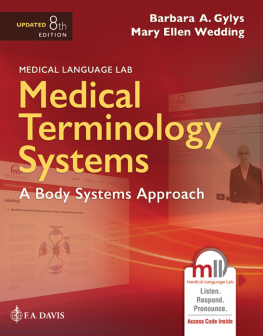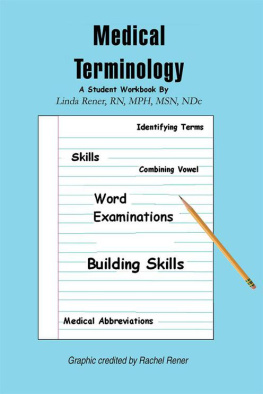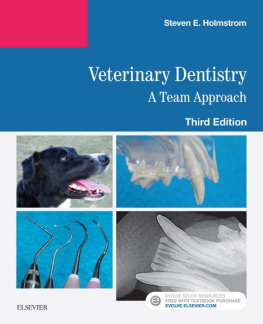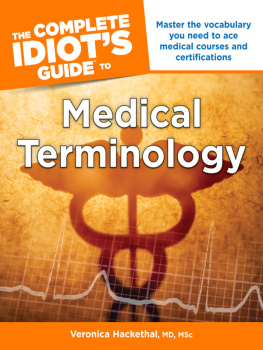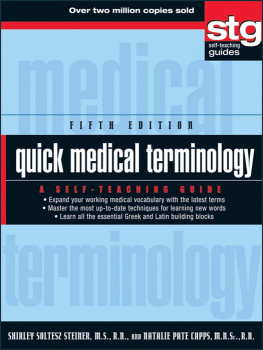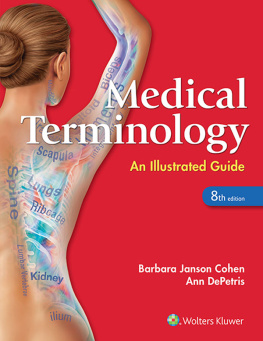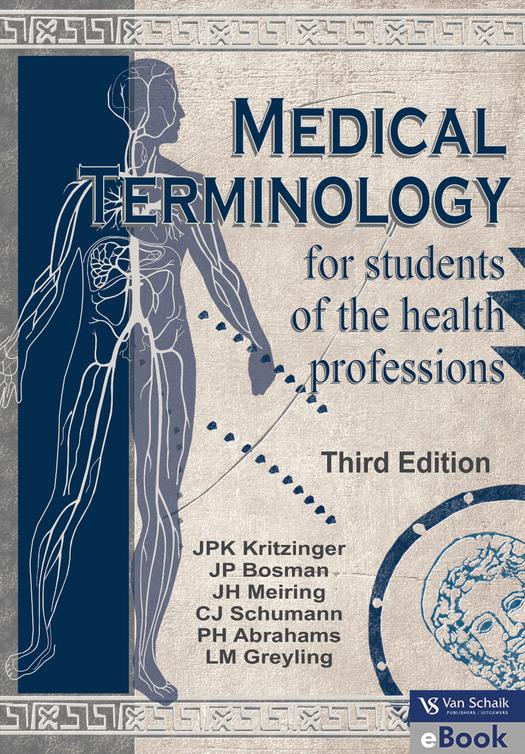J. P. K. Kritizinger - Medical Terminology for Students of the Health Professions
Here you can read online J. P. K. Kritizinger - Medical Terminology for Students of the Health Professions full text of the book (entire story) in english for free. Download pdf and epub, get meaning, cover and reviews about this ebook. year: 2018, publisher: Van Schaik Publishers, genre: Religion. Description of the work, (preface) as well as reviews are available. Best literature library LitArk.com created for fans of good reading and offers a wide selection of genres:
Romance novel
Science fiction
Adventure
Detective
Science
History
Home and family
Prose
Art
Politics
Computer
Non-fiction
Religion
Business
Children
Humor
Choose a favorite category and find really read worthwhile books. Enjoy immersion in the world of imagination, feel the emotions of the characters or learn something new for yourself, make an fascinating discovery.
- Book:Medical Terminology for Students of the Health Professions
- Author:
- Publisher:Van Schaik Publishers
- Genre:
- Year:2018
- Rating:4 / 5
- Favourites:Add to favourites
- Your mark:
Medical Terminology for Students of the Health Professions: summary, description and annotation
We offer to read an annotation, description, summary or preface (depends on what the author of the book "Medical Terminology for Students of the Health Professions" wrote himself). If you haven't found the necessary information about the book — write in the comments, we will try to find it.
Medical terminology for students of the health professions offers a systematic approach to explaining terminology to entry-level students of the health sciences, including students of medicine, dentistry, nursing, dietetics, occupational therapy, radiography, human movement sciences, speech-language pathology and audiology, and veterinary sciences.The focus of this book is on terms and study texts with clinical relevance that are commonly used in health and veterinary sciences practice, and the textbook includes exercises to further facilitate students comprehension of medical terminology.This book has six sections. The first contains an introductory chapter, followed by eight vocabulary chapters in section II, and six chapters on systems of the body in section III. A chapter is also included (in section IV) on veterinary science terminology for students of that profession. Section V deals with medical terms in context. Section VI contains lists of eponyms, term parts (with both their English and Afrikaans meanings), abbreviations (used in pharmaceutical prescriptions) as well as a comprehensive word list of medical terms.This book is designed in such a way that students who study this text over a period of 14 weeks will be well equipped to analyse and understand most medical terms. It will enable students to understand and use the highly technical terminology of the health and related sciences with confidence during their studies and professional careers.
J. P. K. Kritizinger: author's other books
Who wrote Medical Terminology for Students of the Health Professions? Find out the surname, the name of the author of the book and a list of all author's works by series.



